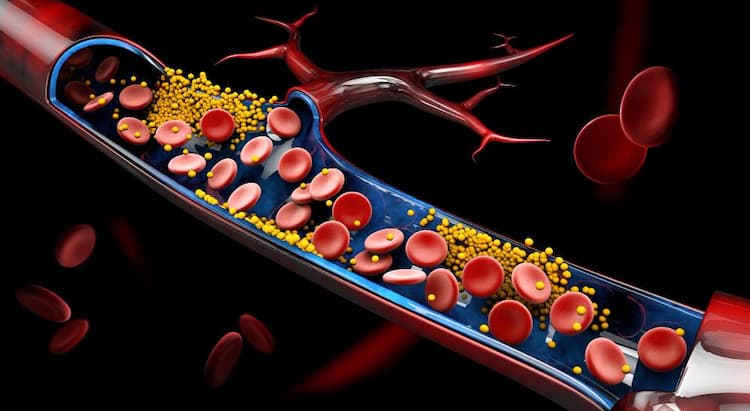Action is needed to reduce e-cigarette use among adolescents to lower lifetime CVD risk

Medically Reviewed By
Dr Divya Rohra
Written By Prekshi Garg
on Jul 4, 2022
Last Edit Made By Prekshi Garg
on Mar 16, 2024

In the early 2000s, e-cigarettes were introduced into the market. The reason being that the tobacco-flavoured products in an e-cigarette could potentially reverse years of tobacco use among addict adult smokers using standard, combustible cigarettes. However, their use has substantially increased over the years, especially among the youth and young adults. A National Youth tobacco Survey of 2019 showed shocking statistics where 27.5% of young adolescents studying grades 9 to 12 and 10.5% in grades 6 to 8 reported vaping (e-cigarette usage). The Association also observed that many of these young adolescents had never smoked combustible cigarettes and were new users of e-cigarettes. The youth trapped in this addiction may develop life-long tobacco and nicotine addiction. Moreover, the adverse effects of e-cigarettes are life-threatening. While the U.S. Food and Drug Administration (FDA) recently approved the marketing of these e-cigarettes, many countries like India have permanently banned e-cigarettes and their derivatives, which can put the youth on a highway of future tobacco addiction. According to a new scientific statement from the American Heart Association published in the Association's peer-reviewed journal, there is a requirement to regulate e-cigarette usage among youth and adolescents to lower the risk of cardiovascular diseases(CVD) and other adverse health effects.
What are ENDS?
Electronic nicotine delivery systems (ENDS) are E-cigarettes. These are devices containing a battery and an atomizer. The battery heats the e-liquid and a reservoir holds e-liquid that is filled through cartridges, pods, and tanks. These electronic devices heat e-liquids to release aerosols or vapours. The e-liquids contain nicotine or THC- the prime psychoactive compound usually found in cannabis. ENDS have pipes, hookah, cigars, or cigarettes that are commonly used by adult smokers. The latest modification of e-cigarettes resembles a USB flash drive device having high concentrations of salt-form nicotine mixed with other harmful chemicals.
Chemicals infused in e-cigarette aerosol
E-cigarettes are liquids that form aerosols when heated. The heated fumes of e-cigarettes primarily contain nicotine- an addictive drug found in cigarettes, cigars, and other tobacco products. They come in different names - “e-cigs,” “e-hookahs,” “mods,” “vapes,” “vape pens,” and “electronic nicotine delivery systems (ENDS).” People using e-cigarettes use a breathing apparatus where the heated e-liquids have potentially harmful chemicals including,
- Nicotine,
- Ultrafine particles that can penetrate deep into the lungs,
- Diacetyl flavouring agent linked to chronic lung diseases,
- Volatile organic compounds,
- Carcinogenic agents,
- Fine heavy metals- nickel, tin, and lead.
However, the toxicity of e-cigarettes is poorly understood, as most e-cigarette manufacturers have not publicly disclosed the entire list of ingredients constituting many e-cigarette products. Other than nicotine, or THC, e-liquids contain vegetable glycerin and propylene glycol, which are regarded as safe by the U.S. (FDA). And so, these products have not been officially tested for their adverse health effects on a person. However, the e-liquids on heating break down into chemicals, such as formaldehyde - a potential cancer-causing chemical. Also, some e-cigarettes marketed as nicotine-free have been tested positive for nicotine presence.
Adverse Health effects of e-cigarettes
Understanding the long-term effects of e-cigarettes may take some time. However, these are some proven adverse reactions e-cigarettes can do to the human body.
Cause Antenatal deaths
Nicotine is addictive and harmful. It can cross the placenta and affect fetal and postnatal development. Therefore, nicotine delivered by e-cigarettes during pregnancy can result in multiple adverse consequences, including sudden infant death syndrome, and could result in the altered corpus callosum, deficits in auditory processing, and obesity.
Impeded young brain development
Substantial evidence suggests that nicotine can negatively influence adolescent and prenatal brain development, making them vulnerable to detrimental consequences including cognition deficit, mood disorders, susceptible addiction to drugs, disruptive disorders- attention-deficit/ hyperactivity disorder (ADHD), and oppositional defiant disorders (ODD). The neurological effects of e-cigarette use include impaired mental health, increased sleep problems, and depression, as it tends to affect certain neural and brain pathways. Addictive behaviours also might be on the rise among young adults that may lead to lifelong unhealthy interpersonal behaviour and social or occupational problems.
Carcinogenic effects
Burned tobacco products and e-cigars release cancer-causing chemicals that can alter the DNA and cellular functions. Thus, causing DNA-damaging effects, such as cancer. Acrolein released from tobacco and non-tobacco products has been linked to several pulmonary diseases, including an increased risk of lung cancer.
Respiratory effects
E-cigarettes are sources of fine aerosols that enter deep into the human respiratory system causing respiratory effects- asthma and chronic obstructive pulmonary diseases.
Cardiovascular effects
E-cigarette vaping induces acute adverse cardiovascular effects while increasing sympathetic nerve activity, heart rate, blood pressure, and prolongation of ventricular repolarization. Therefore, triggering acute and detrimental cardiovascular events.
Affects Skin and Eyes
Detrimental exposure to aerosols through accidental swallowing, breathing, or absorption through skin and eyes can affect the skin and ophthalmic health while inducing toxic effects.
E-cigarettes cause cardiovascular disease risk among youth: According to research.
Inhaling foreign substances can trigger a sequence of respiratory and cardiovascular effects. The lung develops continuously in the early ’20s. When an adolescent vapes, the lung development, and the cardiovascular systems are altered at the base levels causing dysfunction and risk of cardiovascular and pulmonary diseases. Several studies have revealed how the use of e-cigarettes has significantly increased the risk of respiratory health issues, including:
- Wheezing,
- Whooping cough,
- Asthma,
- Lung infections,
- Respiratory disorders,
- Lung cancer.
Young adolescents who use e-cigars develop atrial stiffness, blood vessel function impairment, and increased blood pressure and heart rate. The adverse cardiovascular systems get affected over time with prolonged use. Studies clearly show that harmful and potentially harming chemicals can alter DNA and cell functions. The long-term effect of these DNA-affecting changes leads to heart or cardiovascular diseases (CVD). However, the reduction of vaping in adolescents can invariably improve long-term CVD.
Measures suggested reducing e-cigarette usage
The FDA has issued a policy against the regulation of mint and fruit flavoured e-liquids. Some e-cigarette products are known to have less than 20 mg/ml nicotine levels, while some exceed more than 56 mg/ml. Experts believe outlining a limited permissible level of nicotine in these products is required. In a scientific statement, experts in basic science, cellular and vascular biology, toxicology, pharmacology, and epidemiology reviewed evidence-based studies focused on "Cardiopulmonary Consequences of Vaping in Adolescents." And informed future clinical practice guidelines and expert analysis on the regulation and cessation of e-cigarette use. In this statement, Loren E. Wold, Ph.D. FAHA, chair of the writing group for the scientific statement and a professor and associate dean for research operations and compliance in the College of Medicine at the Ohio State University in Columbus, Ohio, suggested the need for reducing or preventing vaping among youth through current research analysis and research-specific guidelines. Some of the outlined points are mentioned below.
- Removal of all flavoured e-cigarettes, including menthol-flavoured e-cigarettes from the market,
- Educating the youth and their guardians about the potential health risks e-cigarettes can pose,
- Establishing a curriculum with vaping and e-cigarette information for medical students and the next generation of health care professionals,
- Vaping-cessation programs to be run in hospitals for adolescents and young adults,
- Regulating the marketing of vaping products on conventional and online platforms,
- Integrate e-cigarettes or vapes into smoke-free air laws.
Frequently Asked questions
1. Do e-cigarettes affect your heart?
Though considered safer than traditional smoking, several scientific studies indicate that e-cigarettes can affect cardiovascular function. This is because vaping releases fine chemicals that enter the pulmonary and cardiovascular systems, causing adverse cardiac effects.
2. What are the potential risks of using e-cigarettes?
While e-cigarette usage triggers several adverse effects leading to potential risks, including:
- The super fine vapours released enter deep into the lungs and cause lung disorders.
- Acrolein and formaldehyde are carcinogenic and increase lung cancer risk.
- The volatile organic aerosols produced can cause neurotoxic effects and impaired brain development.
3. What are the long-term effects of vaping on the human body?
Youth and young adults are at risk of developing long-term, long-lasting effects due to exposure to nicotine and harmful aerosols. Long-term psychological effects include addiction to nicotine, mood disorders, impaired sleep quality, depression, social and occupational issues, and lowered impulse control.
Conclusion
Initially recommended to reverse smoking addiction among adults, e-cigarettes are the most commonly used tobacco product among youths. Present in both cigarettes and e-cigarettes, nicotine is a harmful addictive stimulant that can cause long-term addiction and health effects. It can increase blood pressure while increasing a higher risk of heart attacks. Tobacco cessation in adults is a public health requirement, but vaping is not the only way to achieve it. The new scientific statement from the American Heart Association includes guidelines through research-based analysis. The statement describes the need to curb and regulate e-cigarette usage among the youth.



